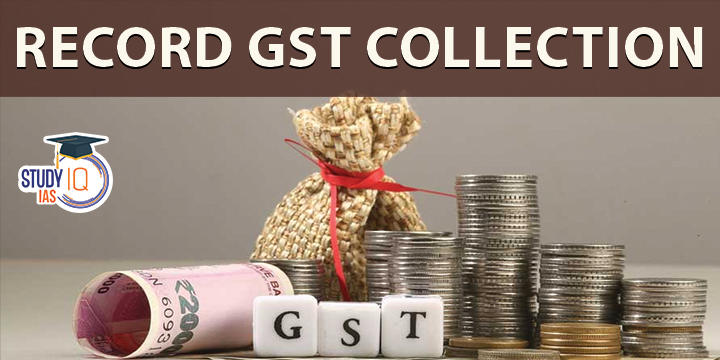Table of Contents
GST Collection Highlight
- Revenue for October 2022 is second highest monthly collection, next only to the collection in April 2022.
- GST Collections in April, 2022 was ₹1,67,540 crore.
- This is the ninth month and for eight months in a row, that the monthly GST revenues have been more than the ₹ 1.4 lakh crore mark.
- Second time the gross GST collection has crossed Rs. 1.50 lakh crore mark.
- Regional Variation in Collection: Haryana recorded a 37% growth, followed by Karnataka (33%), Kerala (29%), West Bengal (26%) and Tamil Nadu (25%).
- Revenues grew slower than the national average in Gujarat and Telangana (11%), Madhya Pradesh and Rajasthan (10%) and Uttar Pradesh (16%).
- Six States clocked negative growth, Chhatisgarh (-3%), Assam (-13%), Mizoram and Manipur (-23% each) and Bihar (-1%).
- Reasons: High inflation rate, increase in retail prices of many consumption goods, the festive season demand, and actions taken to ensure compliance supported the rise in GST collections.
- Concern: Pace of year-on-year growth in GST collections moderated to 16.6 per cent in October from over 25 per cent each in last three months.

Significance Of GST Collection
- Reflect onset of the festive season: At least 12 states/UTs recorded a higher than 20 per cent growth in GST collections in their regions.
- Stable GST Regime: GST has now settled, proper systems are in place and compliance level has increased substantially.
- Economic Recovery: Uptrend in GST revenues signify rebound in economic recovery.
- Recovery in Manufacturing activities in India: Manufacturing sector remained robust and price pressures were contained in October as new orders and production rose at a slower but stronger pace.
- Higher Buoyancy: Revamped focus of the government on tax collections can lead to further increase in collections in the coming months.
- Fiscal Deficit in Limit: GST collections are expected to overshoot the budgetary targets set for this fiscal.
GST Collection Goods and Services Tax (GST)
- GST is an indirect tax which has replaced many indirect taxes in India such as the excise duty, VAT, services tax, etc.
- GST is levied on the supply of goods and services. GST is a single domestic indirect tax law for the entire country.
- The Goods and Service Tax Act was passed in the Parliament on 29th March 2017 and came into effect on 1st July 2017.
- It is a comprehensive, multi-stage, destination-based tax that is levied on every value addition.
Advantages of GST Collection in India
- GST has brought together a number of indirect taxes under one umbrella, simplifying taxation for service and commodity businesses.
- Costs of products and services will be reduced in the long run with the introduction of GST. This is because the cascading effect of a series of VATs and taxes has now been erased.
- GST is aimed at reducing corruption and sales without receipts.
- GST brings accountability and regulation to unorganised sectors such as the textile industry.
- GST brings uniformity in the taxation process and allows centralised registration. This reduces the multiplicity of taxes as they do not have the resources to hire tax experts.
- GST reduces logistics cost by eliminating border taxes and resolving check-post discrepancies.
- Positive impact on India’s GDP. It is expected to increase by at least 80% within the next couple of years.
- Possibility of tax evasion is minimised completely with GST coming into action.
Disadvantages of GST Collection in India
- Increased costs of software purchase that can assist in GST filing process leads to higher operational costs for many businesses.
- GST has given rise to complexity for many business owners across the nation.
- GST has received criticism for being called a ‘Disability Tax’ as it now taxes articles such as braille paper, wheelchairs, hearing aid etc.
- The complexities in taxation for products have seen manufacturers suspend their reward programs, which are sure to affect consumers.
- The GST transaction fees within the financial sector have become more expensive increasing from 15% to 18%.
- With GST, insurance premiums have become more expensive.
- The impact of GST on the real estate market caused an 8% increase on real estate price leading to 12% fall in demand closely after it was brought into action in June, 2017. This however, may be a short-term trend.
- Petrol is not under GST, which goes against the ideals of unification of commodities.





















 WhatsApp
WhatsApp